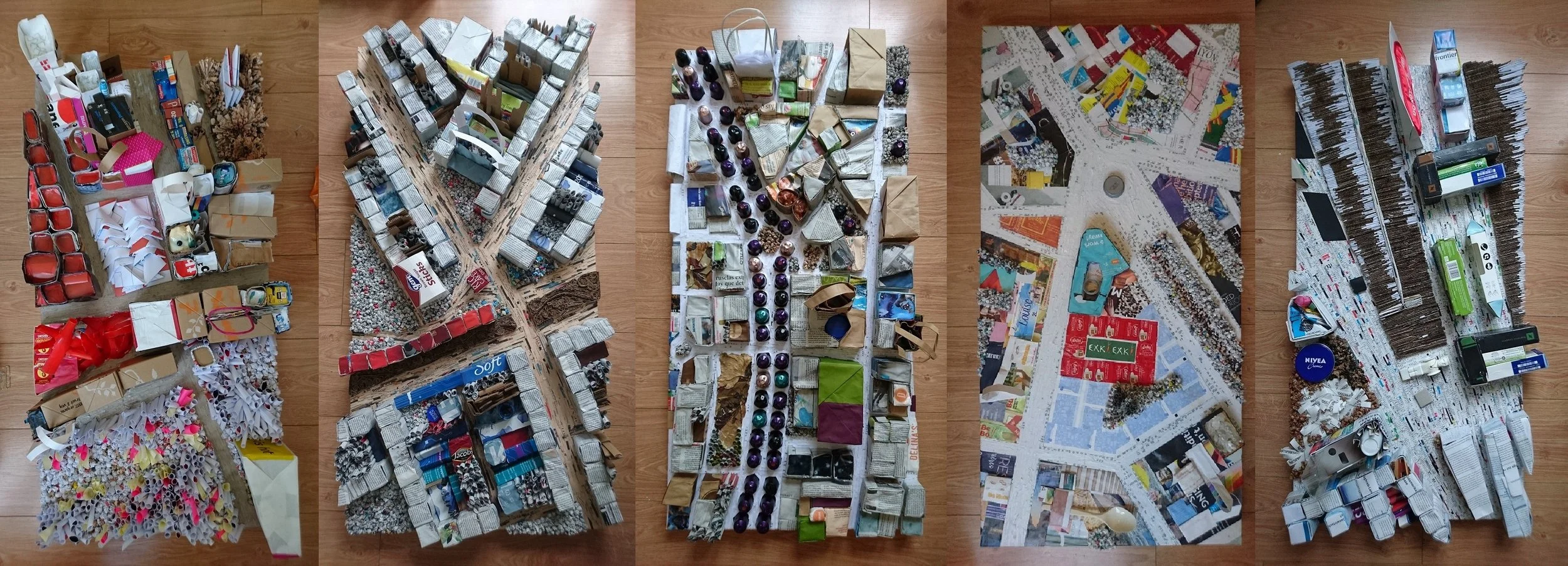Interview
Chris Wilcox
Chris’ practice, which he started in the late eighties, falls into two main areas, abstract painting and papier-mâché sculpture. His Biology Degree has a strong influence in his work as he likes to explore the way Nature creates structures, shapes, colours and textures. Chris’ Master’s in Environmental Diagnostics got him focusing on waste as a resource not just something to reduce to increase efficiency. Through both mediums, Chris enjoys pushing the materials to see what properties are revealed. This is especially so with sculpture, where he prefers to use the colours of the materials to create rather than applying paint. When he uses paint or manipulates paper and card, he follows a ritualistic repetition of application and reapplication of material. The process is also an attempt to capture the movement during the creation of the pieces. In recent works, Chris has been using found items or clean dry waste.
What is your background and how did you start your journey in the art world?
“I have always been interested in art, drawing, painting and sculpture. During my study for A-levels (Biology, Chemistry and Maths) in the 80s, I also did Art O-Level as a ‘release’ from all the science. But before I ‘clarified’ my practice; I remember creating small dioramas made from scavenged mechanical items, or figurines from a seam of clay I discovered near the stream that ran past the Oxfordshire village our family lived in.”
What does your work aim to say? Does it comment on any current social or political issues?
“I guess there is no real social or political focus other than the fact that all art has a social or political context. For me, art is a continual search for producing shapes and forms. If in doing that some projects point towards an issue, I enjoy following where it leads me. I also like themes: I did a tryptic ‘Trinity’ (2017) that looked at the Christian view of the Father, Son and Holy Ghost. There is also my interpretation of ‘The Last Supper’ where I represent Jesus and the twelve disciples with textured monochrome panels. I am a significant way through making a set of 20 papier-mâchè masks of a similar mould, but using different raw waste materials. Masks have always been an interest to me not because of what they hide, but because the wearer might make a mystical connection with what the mask represents.”
Do you plan your work in advance, or is it improvisation?
“I quite often have an initial concept, but in the application of the work for each piece I test and change to see what happens with the material. Over the years, I have developed some application practices, which I will sometimes utilize. Mostly, it is the repetitive reapplication of material that slowly builds up what will eventually become the result.”
“I have always been interested in art, drawing, painting and sculpture.”
Are there any art world trends you are following?
“I am very interested in the repurposing of waste materials into art. My mask Afro-001 (2018) is mostly made from local London newspapers. The set of 20 masks are all shredded paper/card from different recycled sources, such as packaging, magazines or paper bags.”
What process, materials and techniques do you use to create your artwork?
“The majority is the repetitive reapplication of material (acrylic paint on its own or mixed with other materials, or papier-mâchè, or thermoset plastic) to build up structures and shapes. I enjoy the meditative process of the focus when creating art in this way.”
What does your art mean to you?
“It is difficult to describe. What does your arm mean to you, or an individual eye, or breathing? It’s always been a significant part of my life and I couldn’t see myself not doing it. If I see that people enjoy what I have created it gives me energy, but even if I had no feedback creating art & I stacked my work in an attic it will always be a part of me.”
What’s your favourite artwork and why?
“Apart from the cliché ‘my current project,’ to date my favourite is The Last Supper. I had a lot of fun trying to locate themes or items that would represent the disciples. It’s strange to think that they are such a significant part of the New Testament, but so little is known about them other than their deaths.”
Have you had any noteworthy exhibitions you'd like to share?
“I am still in the early stages of art promotion and exhibitions, but The Last Supper has been shown in several churches (The Crossing in Walsall, The Carpet Factory in Darlington, Litchfield Cathedral and part of the 900-year celebration of Chichester Cathedral in 2008). Last year (2024) I had a stall in the Untitled Artists Fair in the Chelsea Old Town Hall (London). I hope to exhibit in galleries over the coming years either in group or solo shows.”
Website: www.wilcoxink.com
Instagram: @wilcoxink
















